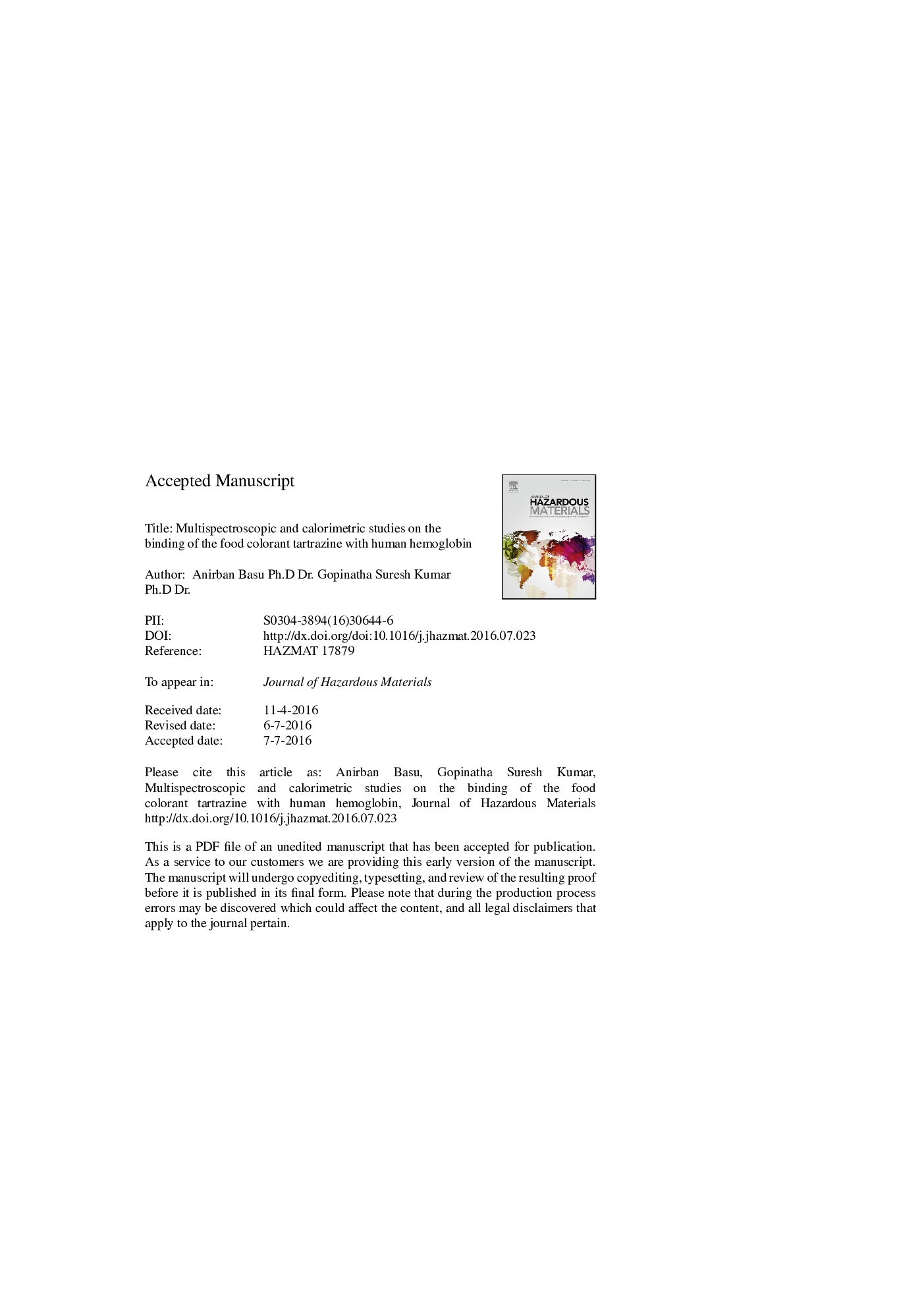| Article ID | Journal | Published Year | Pages | File Type |
|---|---|---|---|---|
| 6970112 | Journal of Hazardous Materials | 2016 | 41 Pages |
Abstract
Interaction of the food colorant tartrazine with human hemoglobin was studied using multispectroscopic and microcalorimetric techniques to gain insights into the binding mechanism and thereby the toxicity aspects. Hemoglobin spectrum showed hypochromic changes in the presence of tartrazine. Quenching of the fluorescence of hemoglobin occurred and the quenching mechanism was through a static mode as revealed from temperature dependent and time-resolved fluorescence studies. According to the FRET theory the distance between β-Trp37 of hemoglobin and bound tartrazine was evaluated to be 3.44 nm. Synchronous fluorescence studies showed that tartrazine binding led to alteration of the microenvironment around the tryptophans more in comparison to tyrosines. 3D fluorescence and FTIR data provided evidence for conformational changes in the protein on binding. Circular dichroism studies revealed that the binding led to significant loss in the helicity of hemoglobin. The esterase activity assay further complemented the circular dichroism data. Microcalorimetric study using isothermal titration calorimetry revealed the binding to be exothermic and driven largely by positive entropic contribution. Dissection of the Gibbs energy change proposed the protein-dye complexation to be dominated by non-polyelectrolytic forces. Negative heat capacity change also corroborated the involvement of hydrophobic forces in the binding process.
Related Topics
Physical Sciences and Engineering
Chemical Engineering
Chemical Health and Safety
Authors
Anirban Basu, Gopinatha Suresh Kumar,
